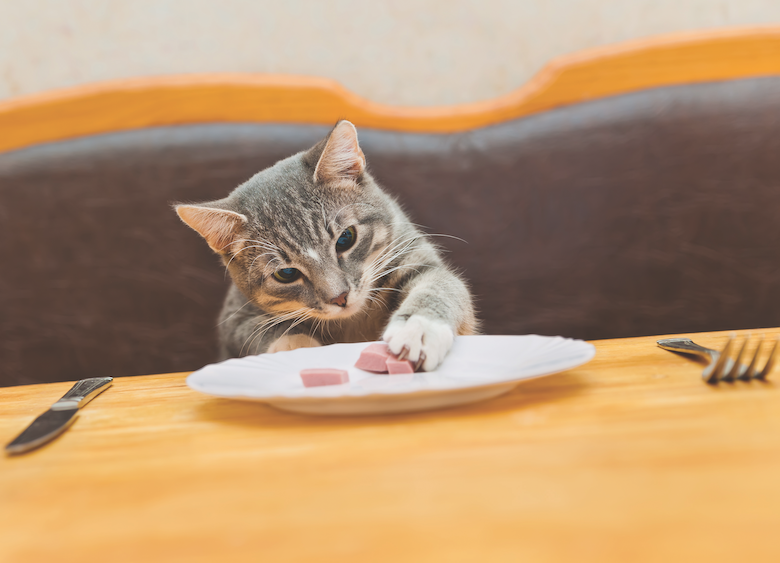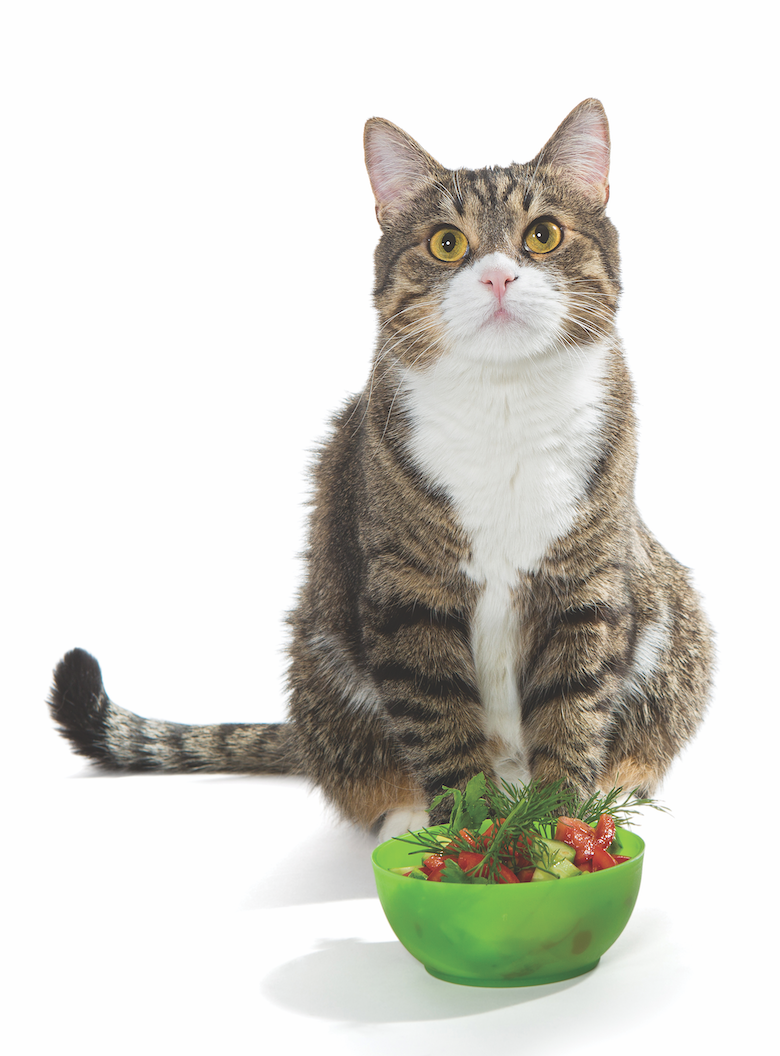My four indoor cats, ranging in age from 8 months to 14 years, count on me to make smart and nutritious food choices for them. And, I’m betting your cats count on you, too. After all, the most direct path to good health for your cats starts with what you put in their food bowls.
Welcome to the emerging clean pet food revolution that focuses on making affordable and clean food choices to ensure your cat sports a shiny coat, well-operating organs and limber joints that help him live well into his senior years.

Photo: MihailUlianikov | Getty Images
Clean eating made easy
“You are what you eat and so is your cat,” says Dr. Judy Morgan, a veterinarian who operates a holistic pet health care practice in Woodstown, New Jersey, and is also a pet food cookbook author and certified veterinary food therapist. “Cats and dogs deserve to eat clean and, by that, I mean real food you can identify by looking at it and not highly processed food filled with preservatives.”
Dr. Ernie Ward, a leading veterinarian in pet nutrition and founder of the Association for Pet Obesity Prevention, strongly agrees.
“The bottom line is that the clean pet food movement is a new step in pet nutrition,” he says. “Since food is the foundation of health, clean pet food using recognizable ingredients, complex carbohydrates and high-quality protein sources can help you make decisions that fit your pet’s needs and lifestyle.”
You like the time-and money-saving convenience of feeding your cat commercial food. But you see the nutritional benefits of serving top-quality, non-processed proteins to your cat. So, how do you accomplish this without taking a big bite out of your family budget?
“Your cat would benefit by eating organic or grass-fed filet mignon, but who could afford that?” says Dr. Jean Hofve, holistic veterinarian, best-selling author and founder of the Little Big Cat website.
Her dual solutions? Seek out commercial cat food made with all human-grade ingredients or add healthy toppers, such as organic ground turkey or sardines, to your cat’s kibble or canned food meals.

Photo: VLG | Getty Images
Meat is a must
Cats are obligate carnivores. Simply stated, felines thrive best on meat diets. Don’t be upset if your cat rejects canine-welcome whole foods such as blueberries, steamed green beans or kale.
“With cats being carnivores, excess vegetables can change the pH in their urine,” Dr. Hofve cautions.
Feline favorites to add as toppers to the commercial diet include organic fish oil, chopped up sardines (in oil), anchovies, canned clams, organic grass-fed chicken liver or ground turkey purchased directly from the supermarket butcher. Or make yourself a plain, organic turkey burger and give a small amount to your cat.
Related: Cats Should NOT Be Vegetarians
“A little goes a long way in terms of being nutritious to your cat,” Dr. Hofve says. “For example, you can chop up one sardine and top three meals or add a dollop of ground turkey to each meal. I recommend getting your fresh meat directly from the butcher to make sure it is free of any additives.”
Other ideas include adding a spoonful of organic human baby food to your cat’s bowl.
“Organic baby foods, especially the turkey-and-vegetable or the chicken-and-vegetable kinds are ideal because the ingredients have been cooked and pureed and still full of real nutritional value to your cat,” she says.
On occasion, treat your cat to an egg, suggests Dr. Morgan.
“Eggs are phenomenal because the yolk contains vitamins A, D and K,” Dr. Morgan explains. “Most processed pet foods are low in vitamin D. Treat your cat to a whole egg fed hard-boiled or scrambled as a healthy treat.”
If you have a multi-pet household that includes dogs like I do, consider treating all to homemade bone broth from free-range meat bones from the butcher. Cook the bone in water slowly and avoid adding onions or salt. Let it cool and pour this cartilage-rich broth over your cat’s dry food to add flavor and serve as a needed hydration source.
Of course, be sure to consult with your veterinarian about introducing bone broth to your cat, especially if your cat has an underlying health condition. The goal is to boost your cat’s nutritional state, not weaken it.
Finally, Dr. Morgan encourages you to read the package label carefully. Any ingredient listed after salt is only present in small amounts.
“Everything below salt is less than 0.5% of the contents,” Dr. Morgan says. “Make sure that the first five ingredients on the label you [can] pronounce and recognize, such as salmon or chicken breast. Stay away from meat byproducts or ones that list things like corn in the first few ingredients.”

Photo: ssi68| Getty Images
Bottom line
What you feed your cat and the amount does matter in terms of your feline friend’s overall health. Measure portions and focus on serving up quality proteins for your furry meat-eater. Finally, partner with your veterinarian so that, together, you can select foods and treats best suited for your cat’s age, health and activity level. Your cat just may purr in gratitude. My feline foursome does.
Top Photograph: Credit | Getty Images
Read Next: Can Cats Eat Potatoes? How About Sweet Potatoes?
